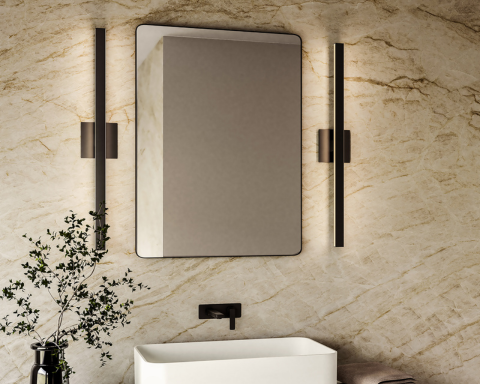Free Ground Shipping on Orders Over $49 Details & Exclusions Excludes Curb Side Delivery (LTL). Lower 48 United States Only.
Aug 19, 2013
Accommodating Style: ADA Lighting Requirements
 After the 1991 passage of the Americans with Disabilities Act, accommodating design became a prerequisite instead of an afterthought for businesses that serve the public. Even for private homes, ADA guidelines provide a good starting place in case your guests–or even you–face disabilities down the road. Keep reading to find out more about ADA regulations and how to make sure your venue can accommodate everyone who walks through your doors.
After the 1991 passage of the Americans with Disabilities Act, accommodating design became a prerequisite instead of an afterthought for businesses that serve the public. Even for private homes, ADA guidelines provide a good starting place in case your guests–or even you–face disabilities down the road. Keep reading to find out more about ADA regulations and how to make sure your venue can accommodate everyone who walks through your doors.
What the Americans with Disabilities Act covers
The ADA marked an important civil rights victory for people with significant physical or mental disabilities. The law acknowledged the physical and procedural barriers these Americans face, and established standard guidelines for better access and reasonable accommodation. The design requirements affect public buildings and commercial spaces; residential spaces are usually exempt, but are covered if the residence includes a business where clients could visit. For more info, visit the ADA’s government page.
Why compliance is important
Adherence to ADA regulations provides your customers and employees with safe access, and keeps your business out of legal trouble. As a civil rights issue, skirting the requirements carries stiff penalties. Non-compliance can result in serious injuries, and violations are punishable with fines of up to $55,000 for the first infraction, and up to $110,000 for subsequent violations.
How ADA requirements affect lighting choices
Section 4.4 of the ADA dictates the proper clearances on objects that hang from the ceiling or protrude from the walls. This affects two types of lighting: wall sconces and ceiling lights.
- Wall sconces between 27 inches and 80 inches above the floor must protrude no more than 4 inches from the wall in all walkways, halls, and aisles. Any wall lights above or below this height range have no restrictions.
- Ceiling lights must be high enough to prevent people from bumping into them and causing head injuries. To that effect, all fixtures must allow a minimum of 80 inches of clear head room in all walkways and hallways. This dovetails with traditional design sensibilities, as a proportionate light will hang high enough to avoid obstructing foot traffic (unless it’s balanced over a table or countertop and thus not in a walkway).
Following ADA requirements for lighting doesn’t mean you’re stuck with boring or unattractive ceiling light fixtures and wall sconces. Lighting manufacturers have moved far beyond utilitarian, industrial lights and married ADA specifications with beautiful style and design that everyone can appreciate. All it takes is a little change in perspective.




